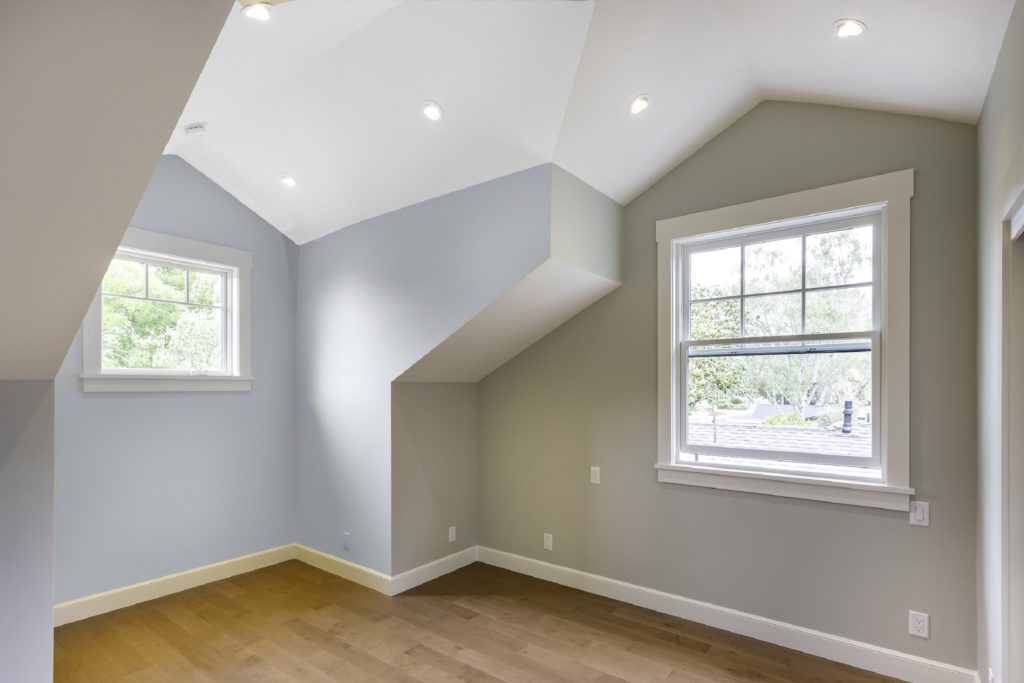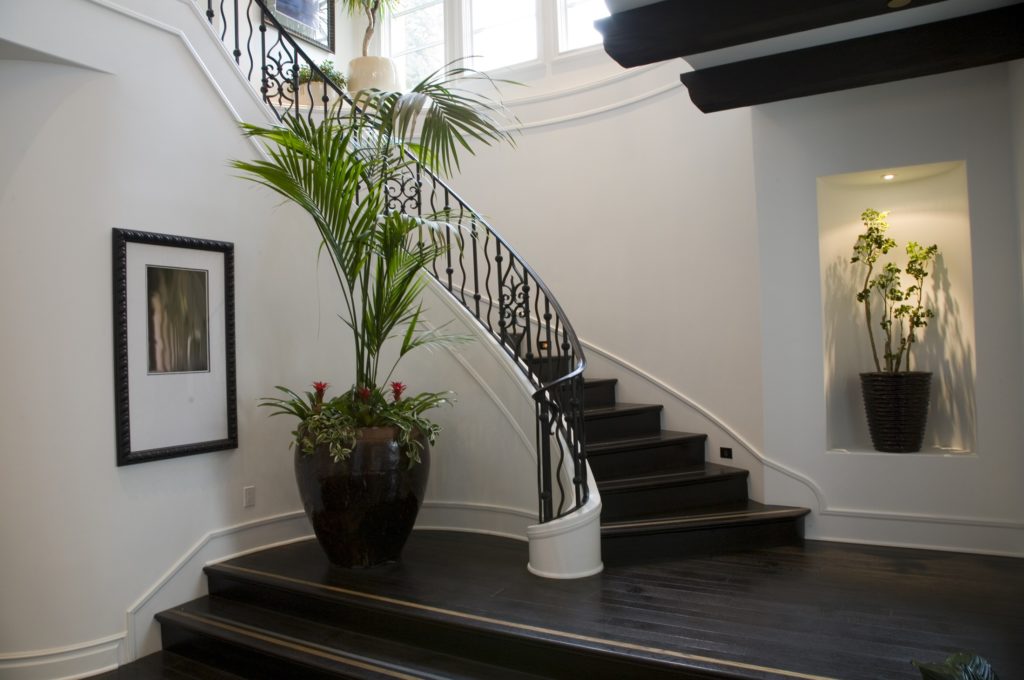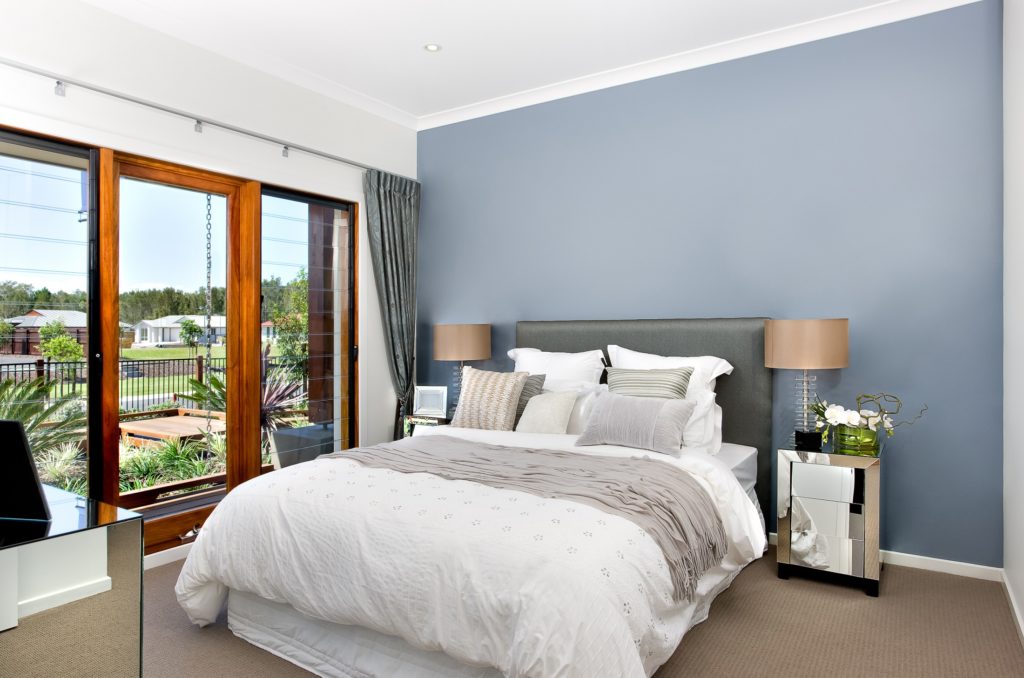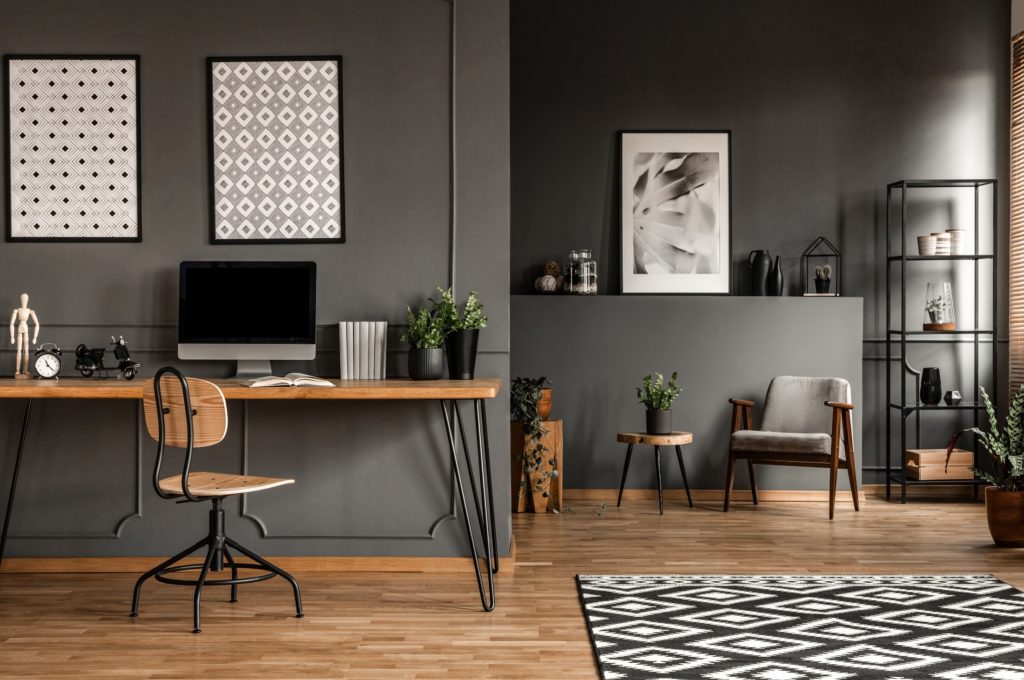Do I Need Primer To Paint A Room?
Asking if you need a primer to paint a room? There are a few types of primers needed on room surfaces. Primer paint for walls, also primer before painting wood. Giving you inside trade secrets, when a primer is needed to paint a room, & how many coats of primer you need.
Laying this out, if you need a primer for different areas of a room. The answer is yes, using various primers suggested, before painting walls, ceilings, or trim many times, is to your best advantage.
Keeping this in the forefront, primers are designed to seal surfaces, allowing final finish coats to bond and cover properly.
Several different surfaces may require primer, as well as reasons why a primer is recommended when you are painting a room, is what we will be discussing.
Giving you real case scenarios of actual interior jobs we've completed, thank goodness we primed a room first. Was just what we needed painting a room, to go without a hitch.
How To Paint A Room Professionally
Knowing how to paint a room professionally, will have the greatest uniform finish, painting in the most reasonable time possible. Primers are indeed at the crux of any painter's list of materials.
One of the first things you need to know, painting a room professionally is using primer. Reason for this important topic is you do not want paint coming off in sheets, or peeling up less than a year later. Interior bonding primers assists several areas inside the home.
Let me first convey that a primer is meant to not only seal, but allow finish coat to have something better to grab & bond. Second, all bare wood needs a primer (alkyd being oil, or acrylic being latex) first.
Allowing primers to properly dry, before finish coats are applied. Remembering you can paint a latex over oil, but not oil over latex.
You can use an oil primer, following with a latex finish coat, but not a latex primer with an oil finish coat. That could be first disaster, unless your wishing for a bubbling effect.
This rule goes for all surfaces within a room, ceilings, walls, also wood trim. Furthering this conversation, if your surfaces are already painted, wishing to repaint, you're safer using latex primer, unless you know for sure you have an oil finish coat.
If brand new bare wood, or varnished cabinets, an oil primer works best, followed by a premium latex finish enamel coat. Not getting in the weeds just yet with primers, just wanted to lay the ground work, before speaking of each section within a room.
Putting proper primers on first, will undoubtedly make a room professionally painted once you've finished. Speaking of not having any bleed-through, finish coat grabbing much better, having an even coverage.
Paint Primer, In One
Today with paint industries technical advancements, formulations have improved greatly. Several premium interior paints ranging a wide spectrum of manufactures now offers paint primer in one can of paint.
These premium interior paints typically have a higher viscosity, covering much better than ones without primers built in. But be careful, not to confuse this from an actual, full pledge primer. This could be disastrous, in a couple of cases outlining below.
Primer paint for walls, is ideal when walls are previously painted. Making sure you use same sheen, as discussed below. BEHR™ offers a great paint -n- primer, in most sheens and digital colors available.
What's more pleasing, and cost effective, and getting walls a brand new look, a make-over without needing to rob the bank? Your paint & primer in one can, may cost a little more, but you'll be way ahead of the game, painting this morning, entertaining this evening!
Do My Walls Need Primer?
- New textured drywall needs primer
- Painting light or neutral based colors over dark
- Painting a different sheen, primer required
Drywall Textures Need Primer
All new textured drywall, no matter what level of of smoothness needs a primer first. Ideally a Polyvinyl Acetate (PVA) flat primer is used to seal porous drywall with a non-reflective finish.
Having drywall primed with a PVA primer undercoat first, our eyes can focus on any deviations, correcting before any finish coat is applied. PVA's allows finish coats to lay down much smoother, without lap marks, lines, or strokes.
These types of primers are usually a quick dry, flat primer that allows painting top coats within hours, not days. They also are the cheapest paint per gallon in a paint store, than your finish coats.
PVA primers are very important in new construction, as just about every new home builder requires PVA before finish coats are applied. Biggest reason is allowing drywall contractor fixing any textures before paint.
Painting Over Dark Colors With Light
When painting over dark colors with a much lighter, or white color, a primer is also suggested. Reason for this is final lighter coat will cover much better, not seeing any bleed-through.
If painting dark over light, using a paint & primer in one works. However, if not using a premium final coat with primer in paint type, a smarter way is using a PVA primer with 50% of final paint colorants added to the primer. Either way, painting dark or light, or light over dark, primers should be considered on your walls.
Painting A Different Sheen Needs Primer
Most importantly painting over a semi-gloss wall with an eggshell sheen, you'd better have a flat primer applied first. Reason is because this allows eggshell paints to grab much better, than trying to bond to a slick surface.
You'll thank me never having a problem with paint peeling up in large pieces, now knowing this, if ever painting over a semi-gloss wall with an eggshell paint finish.
Using a flat quick dry primer, this also can be tinted 50% to your final paint color additives, making final coat with full color going on much easier.
When You Do Not Need Primer
Many times walls need primers beforehand. If unsure, you can never go wrong applying primers on walls first, no matter what. When you really do not need a wall primer is painting with similar color, same sheen on a previously painted wall.
Do My Ceilings Need Primer?
- Brand new drywall ceilings needs primer
- Stains from water needs a blocking agent
- Painting light over dark colors needs primer
- Painting a different sheen needs primer
- Heavy moisture within a room may need primer
New Ceilings Needs Primer
Brand new ceilings, similar to walls, having texture or smooth skim coats need a flat non-reflective primer first. Reason is no matter how final paint is applied, you'll see final paint coating going on much more evenly. Same typical PVA primers are used in these areas also.
Ceiling Paint As Primer?
You bet! Flat ceiling paint can be used as an interior primer. Making it very easy to sand before applying finish coats of higher gloss. Normally interior doors come primed with a white colored primer. However, if they aren't primed when you pick them up, using any flat white paint, including ceiling paint as an interior primer for your doors.
Even if you had a piece of ceiling drywall replaced, after finishing drywall ceiling patch, a quick application of primer is recommended. This goes without saying prime any stains up there too, so no bleed-through will never be seen afterwards.
Painting Light Colors Over Dark
Painting ceilings are most visible, largest one surface in a room. Priming over dark, painting a lighter color or visa-versa ensures final interior paint coating lays down most evenly. Yes, most ceilings are a ceiling white color, just as most paint manufactures have their own ceiling white paints.
Each company has their own unique white color, and not being a universal color across all paint companies. But if painting dark over light, or light over dark on your ceilings, a primer is highly recommended beforehand.
Painting Ceilings A Different Sheen
If painting a ceiling with eggshell, going over a gloss or semi-gloss, best applying a quick dry flat primer first. As this primer will stick, and bond to slick surfaces first, allowing an eggshell sheen to grab much better, especially in rooms having most moisture like kitchens, laundry, and bathrooms.
Not only primers helps ceilings with a different sheen, but allows your new ceiling paint to cover much better, without any visible lines, or roller marks.
Does My Trim Need Primer?
- Brand new untreated wood needs primer
- Painting dark colored trim with a light color
- Painting over varnished handrails, stained cabinets
- Sealing oils, sap, or stains needs blocking primer
Do You Need To Prime Before Painting Wood
Untreated Baseboards Needs Primer
Any new woodwork, bare wood needs sealed with a primer first. Either brush, roll, or spray, this primer needs sanding afterwards, allowing a smooth final coat to be applied.
Most repairs with trim involved, needs a coat of primer also. Just remembering any bare wood, where paint has been scraped first needs a filler, sand, then a primer, sanding again, before paint.
Any new, bare wood found on windows, doors, door jambs need primers first. Lightly sanding is your trick, before painting. Sanding then wiping down dust will make your wood surfaces museum quality. This is very apparent for larger wood surfaces such as mantels, window ledges,
Reason why bare wood needs primer first, is to seal grain, allowing finish coats to bond properly. This is true for interior or exterior wood surfaces, needing primer prior to painting.
Yes, this is a multi-step process, but well worth your efforts for an extremely smooth, luxurious paint finish.
Remember prepare all bare wood with primer. Not only that, but any spills, stains, or oils on baseboards need a coat of primer beforehand. Sealing out, keeping from anything migrating up, seeing on final paint covering.
If not needing a lot of primer, having an aerosol can of KILZ™, is very handy. This will keep crayon, ink, or any other contaminates showing through. This also dries very quickly, allowing you to topcoat soon afterwards.
Painting Over Dark Trim, Using Light Colors
In just about every case, painting dark trim using a lighter off white color, a primer is needed. Covering up dark trim first will allow final paint coat to be applied without any brush marks, or streaks.
Giving you a much easier and thorough paint job. Can't tell you how many examples we've run into this very situation. Primers over dark trim first saves time and money at the same time.
Especially quarter round shoe molding, if stained a dark color matching wood floors. Priming this piece of trim, gives way for a factory paint finish afterwards.
Priming Varnished Mantels, Handrails, & Cabinets
This is one of the most important areas to prime in a room before painting. Reason why varnished woods such as mantels, handrails, also cabinets need a high bonding primer first, is most interior latex paints can easily scratch off with least amount of effort.
Applying an extreme bond primer, either oil or latex first will put your wood surfaces in a prime condition to receive and hold paint, essentially forever. If you do not prime these surfaces, Watch Out! You'll be in for a disappointment in no time.
Allowing these primers to dry overnight, ensures your final paint coat a proper surface to apply paint. Also, I wouldn't use a paint and primer out of one can to do all this for you. Making sure all surfaces are properly primed with a product which it is designed to do.
Sealing Oils, Stopping Sap, or Stains
Another common area in a room where you would need to prime is any contaminants on your trim you wish to paint over. Yes, sanding if first is a good idea, followed by an aerosol can of KILZ® Stain Blocking Primer is very handy, and dries quickly. Never having to worry about that imperfection again.
How Many Coats Of Primer Needed On Painted Walls?
Let me reassure you, walls only need one coat of PVA primer, when painting new textured walls. Matter of fact, painting PVA does not have to meticulously be painted, like your finish coats.
Just trying to seal new textured drywall, giving your finish coats a much better surface to be painted. Allowing to dry, many wall primers are of a quick dry nature, allowing to paint hours later.
Same goes for brand new wood trim, with a high bonding primer. Depending upon the surface, if you see any bleed-through after first coat, you may want to apply another.
A List Of Preferred Professional Primer Suppliers
https://www.sherwin-williams.com/
http://www.behr.com/consumer/colorstudio
http://corporate.ppg.com/Home.aspx
https://www.benjaminmoore.com/en-us
Conclusion
Painting walls, ceilings, and trim with primer first will limit the number of coats of paint needed, saving you time and money. Remembering to have your primers tinted 50% of final paint color, when using deep color bases.
Sanding all solid wood surfaces after primer is applied, dusting, cleaning before finish coats will make your trim, cabinetry much smoother. Sealing, not having to worry about bleed-through, inks, or other contaminants existentially forever. Giving that final coat the best surface to properly bond.
Can't tell you how many times we need primer to paint a room. As this has helped, painting interiors in homes and businesses around Denver. There is an added cost, but for what primes cost, has saved numerous jobs labor, time, & money.
Hope you've gained some valuable information here, & would like to here from you below. If this has helped you with your next priming tasks, give us a like, or share on bar on the left.
















[…] priming new ceiling texture allows the human eye to see any imperfections in texture, or smooth finish before painting final […]
[…] neutralizing, then priming, you're good to go applying your new bathroom paint. A premium paint only requires one coat, as it also has a primer built into it. So theoretically, you're applying two coats of primer with that top shelf paint. Never having to […]